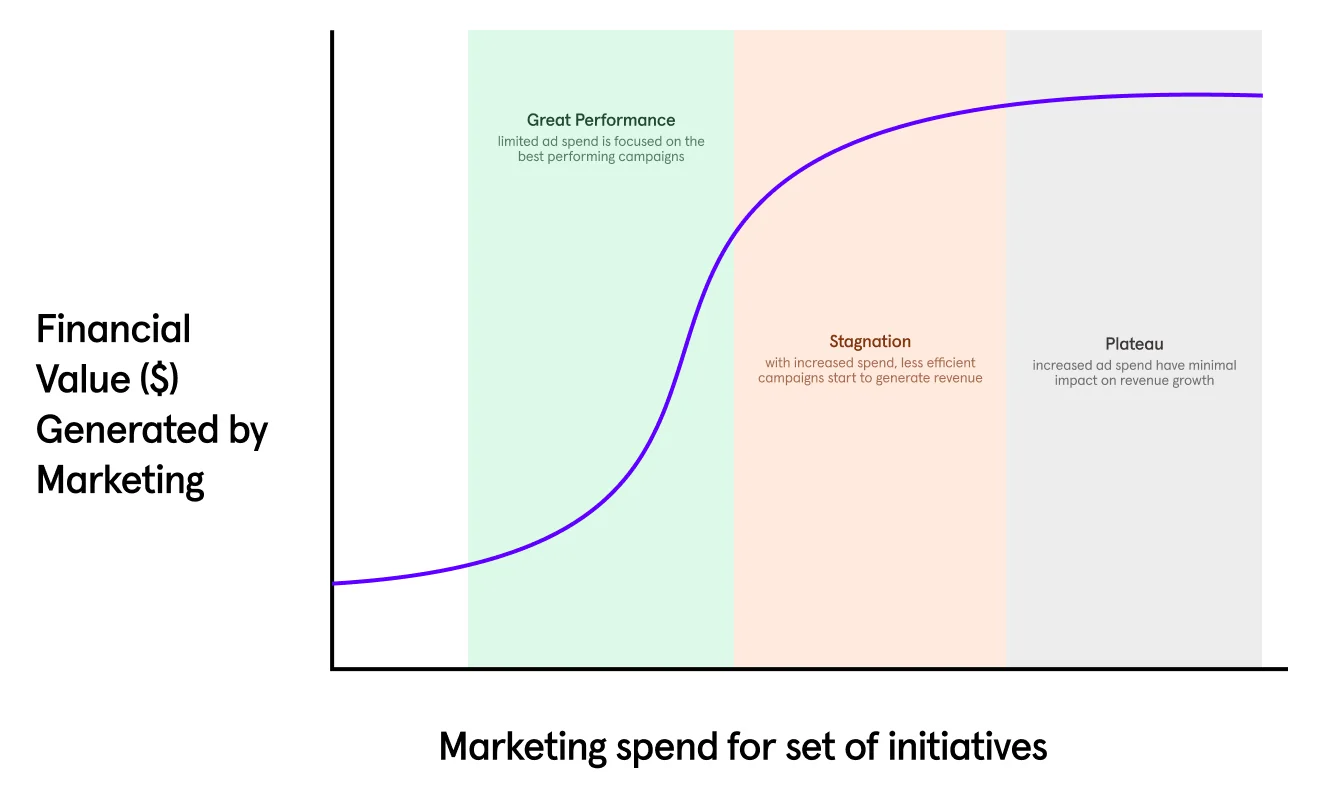We’re all familiar with the idea of product-market fit. But once you know your market, how do you actually reach it? That’s where marketing across multiple channels comes in, with some channels naturally performing better than others.
In this post, we’ll explore how to identify the best channels to place your bets on.
What is a Product-Channel?
A product-channel is the combination of a specific product and the marketing or distribution channel used to reach customers. Think of it as a route-to-customer pairing. For example:
- A free mobile app might pair well with App Store optimization and influencer TikTok.
- An enterprise product might rely on outbound sales and LinkedIn ads.
Evaluating product-channel combinations helps you find the most efficient go-to-market strategy.
What is Product-Channel Fit?
Product-channel fit is about aligning your product with the most effective channels to reach and engage your target audience. While product-market fit ensures your product meets a demand, product-channel fit focuses on the “how” — how to consistently and cost-effectively reach that market.
Product-Market Fit vs. Product-Channel Fit
Think of product-market fit as your foundation and product-channel fit as your path to scale.
Product-market fit means you’ve built something people genuinely want. Your product solves a real problem, users stick around, and there’s early word-of-mouth or traction. It answers the question: “Is this the right product for this audience?”
But knowing your market isn’t enough. You also need a reliable way to reach it.
That’s where product-channel fit comes in. It’s about finding the right channel (or mix of channels) to consistently get in front of your ideal customers in a way that’s sustainable, cost-effective, and scalable. Even the best product will struggle if it’s not discoverable in the places your audience actually hangs out.
A quick way to distinguish the two:
- Product-market fit is about demand.
- Product-channel fit is about distribution.
Startups that overlook this second fit often end up stuck: they know they have something valuable, but can’t figure out why growth is slow. In reality, they haven’t found the right pathway to their market yet. Product-channel fit solves that.
How to find Product-Channel Fit?
1. Find the right channels
To identify the optimal channel mix, start by:
-
Meeting buyers where they are: Map out where your target customers spend their time, both online and offline. Consider the sources they rely on when facing the problem your product solves and make sure you’re present there.
Here’s a quick example to make this real:
- A sustainable DTC product like an eco-friendly water bottle might thrive on Instagram or TikTok, where visual storytelling and influencer partnerships drive discovery.
- A high-consideration purchase like a laptop often benefits from SEO, comparison review sites, or YouTube tech creators.
- An enterprise tool for CFOs may perform best on LinkedIn, G2, and via targeted outbound paired with whitepapers or webinars.
-
Analyzing competitors’ marketing strategies: Look into the channels successful companies in your industry are leveraging. Which platforms or strategies receive consistent investment? Understanding competitor patterns can help you avoid costly mistakes.
Now, let’s break down the most common channels, along with their advantages and potential drawbacks.
| Channel | Pros | Cons | Time to results |
|---|---|---|---|
|
Content This includes SEO and social media posts on topics like thought leadership and industry insights. |
Offers good ROI in the long run. |
Requires high effort to produce quality content. Results take longer to materialize, making it harder to iterate quickly. More challenging to target specific audiences compared to other channels. |
Long (> 6 months) |
|
Paid Advertising Search Engine Marketing, Paid Social (Meta, Facebook, LinkedIn, TikTok, Reddit, G2, Capterra) |
Can be a sustainable growth strategy if executed correctly. Allows for a highly targeted approach. Enables fast experimentation and iteration. |
Can be costly, especially if not optimized. Requires domain expertise in technical ads management. |
Mid (1-3 months) |
|
Outbound Marketing This includes LinkedIn or email outreach. |
Ideal for targeting a narrow, well-defined persona. | Often has a low engagement rate. It’s recommended to pair this with paid ads to warm up the audience. | Mid (1-3 months) |
|
Community-Led Initiatives This includes channels like podcasts and newsletter sponsorships. |
Builds trust and authority within a community. Engages a highly relevant and often loyal audience. |
Not as sustainable— often results in one-off traffic that lasts for just a few days. | Mid (1-3 months) |
2. Find the right messaging
Spoiler: It takes a lot of time and effort.
At its core, the best messaging answers one key question: Why should your target customers pick you over other options?
Start by defining your USPs and target persona. This will give you a list of core pain points and desires to incorporate into your campaigns across the channels above. To find out which messages resonate most, try running small-scale experiments on a few key channels, with a recommended budget of at least $80/day per channel.
When running a marketing campaign, there are nuances beyond just preparing the assets (copywriting, visuals). Here’s an essential checklist to maximise success:
- Audit your landing page
Ensure it’s optimized to convert the traffic you’re directing to it. Ask yourself- Is it clear what your product does and how it works?
- Is it clear why your solution stands out from alternatives?
- Is it clear what the call-to-action is and what’s required from users?
- Ensure tracking is in place
Confirm that tracking is set up correctly to capture key performance data. - Assign a dedicated person to manage campaigns
Campaigns require continuous monitoring and iteration—it often takes more time and effort than anticipated. A dedicated campaign manager can make all the difference.
Once your campaigns are live:
- Iterate as needed:
If a channel isn’t performing as expected, review the data and adjust your approach. For example:- If your ads have a low click-through rate, try enhancing the visuals and messaging.
- If website traffic isn’t converting well, experiment with your landing page’s narrative, information flow, and visuals.
- Sustainable scaling
When a channel is delivering quality results, scale gradually while watching for diminishing returns.

Common Pitfalls to Overcome when Finding Product-Channel Fit
Lacking a structured approach
It’s easy to give up too soon—most campaigns need time to move through a platform’s learning phase, gather data, and optimize. Lower budgets often stretch this timeline, so set a comfortable budget and track progress consistently to avoid pulling the plug prematurely.
Setting budgets too low
Running ads on $5/day is no longer realistic. With quality clicks costing around $3 and competitive CPCs reaching up to $100, your budget should be sufficient to gather meaningful data quickly while still allowing room for experimentation.
Making decisions without enough data
Decisions should be grounded in solid, significant data. Acting on limited or early results can easily lead to misinterpretation and missteps.
Rushing without quality standards
With high-quality assets more accessible than ever, low-quality collateral stands out like a sore thumb. Make sure your visuals and messaging meet the standards your audience expects to create a strong, positive first impression.
Set realistic goals
As an early-stage startup, your brand is still establishing itself, and many people may not even be aware of the problem you’re solving. You’ll also be refining your narratives and ideal customer profile, so it’s normal for your initial ROI to be low. Many companies need at least six months to reach optimization— be patient, trust the process, and keep iterating.
FAQ
What are the 4 types of product-market fit?
What is the 4 fits model?


